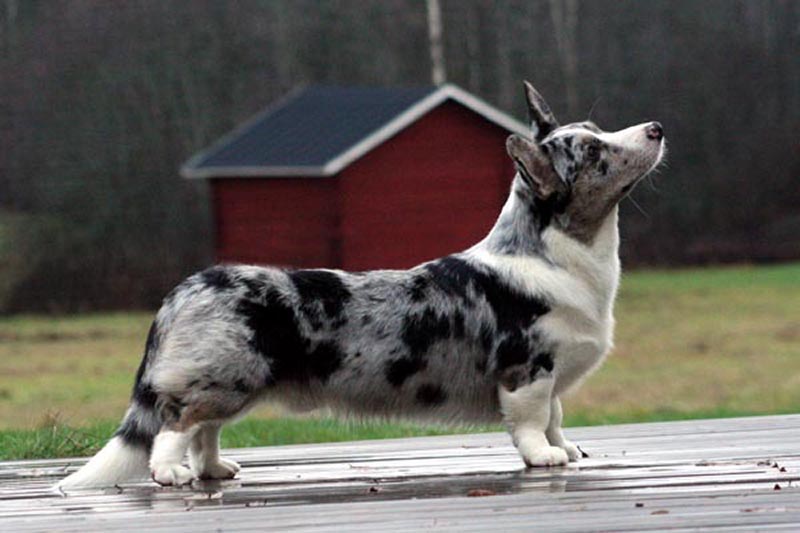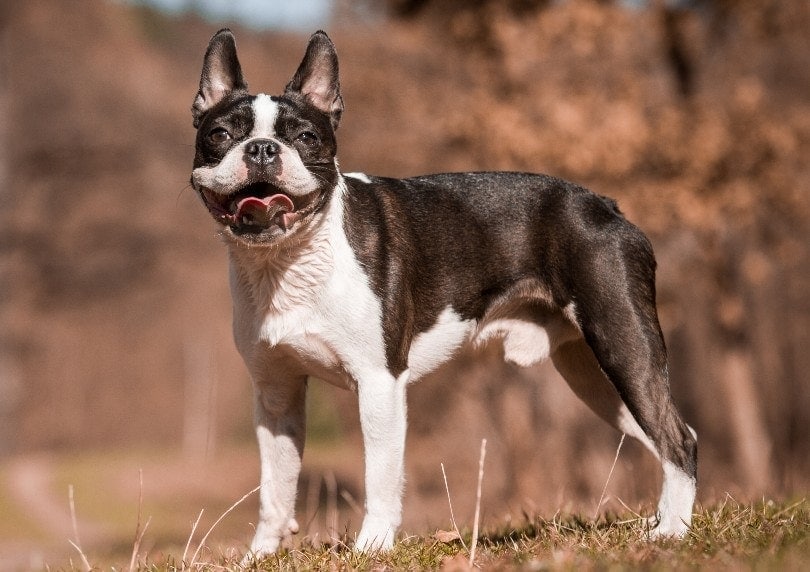Blue Merle Corgi: Facts, History, Recognition & Pictures
Updated on

The blue merle corgi is a unique dog breed with a rare coat pattern. Corgis are one of the most popular dog breeds, with their short legs and long body with prominent ears, they make a gorgeous, beloved family pet.
These dogs have the merle gene, which is only found in Cardigan Welsh corgis and never in Pembroke Welsh corgis. Blue merle is a sought-out coat color by many corgi lovers, and there are a lot of interesting facts and history surrounding the breed. Read on below to find out more.
The Earliest Records of Blue Merle Corgi in History
The earliest records of corgis can trace back thousands of years ago when they were kept on farms as herding dogs around the 10th century. The origins of the corgi have been lost over time, and there are many folklore tales about how the dog breed came about. What we do know is that the Cardigan corgi originated from the British Isles and is believed to have been brought over by Vikings as an all-purpose working dog.
The Cardigan corgi is the only type of corgi that can carry the merle gene and it is not found in Pembroke corgis. Over the years, corgis have been bred to have many different coat variations, including patterns and different coat colors. One of the rarer colors happens to be the merle blue corgi, which carries a merle gene that is inherited.
How Blue Merle Corgi’s Gained Popularity
Corgis were quite popular on Welsh farms back in the day, and their stature made them suitable for herding cattle. Their small size and docked tail allowed them to avoid being trampled or kicked by cattle, and they soon became popular working dogs on these farms.
While corgis made excellent dogs for farmers, corgis are now bred more commonly as family pets, and there are many more coat variations thanks to breeders. Blue merle is one of the rarer coat variations seen in Cardigan corgis and it is clear why the blue merle corgi became so popular, with their mottled patches of fur color and striking blue eyes.
Formal Recognition of Blue Merle Corgi’s
Up until 1934, Welsh corgis were believed to only be one breed, but that changed when the AKC (American Kennel Club) recognized corgis as two separate breeds, the Pembroke Welsh corgi, and the Cardigan corgi. The blue merle variation in pure Pembroke corgis is not officially recognized by the AKC, but blue merle Cardigan corgis are because they can carry the merle gene. The blue merle gene found in Cardigan corgis was approved in December 1994 by the AKC, and it is recognized as one of the breed’s standard colors.
Top 3 Unique Facts About Blue Merle Corgi’s
1. Only Cardigan Corgis Carry the Merle Gene
No blue merle Pembroke corgi exists, and if they do, it is likely because they were crossed with another dog carrying the merle gene. Cardigan corgis carry the merle gene and come in a wider range of coat colors than the Pembroke corgi. Crossbred Pembroke corgis can have the appearance of a blue merle corgi, but they are not purebred.
This can happen if a Pembroke corgi is crossed with a blue merle Cardigan corgi, however, it is frowned upon by ethical breeders to purposely crossbreed to get the blue merle coloring due to the risk of health issues.
2. Merle Is Caused by a Dilution Gene
The merle gene is dominant and can be inherited if one of the dog’s parents carries the merle gene. The gene dilutes the corgis’ eyes, coat, and skin which can cause discoloration. It also increases the chances of heterochromia in blue merle corgis, where one eye can be a bright blue, and the other a dark brown.
3. Double Merle Corgis Are Prone to Health Issues
In cases where two blue merle corgis have been bred together, the puppies will inherit two merle genes from each parent. Unfortunately, this can be dangerous and most of the puppies will have serious health issues for the rest of their life. Breeding two merle dogs is considered unethical by many breeders for this very reason. However, double merles can happen accidentally, usually when one of the parents carries the merle gene but does not show it.
Does a Blue Merle Corgi Make a Good Pet?
Blue merle corgis make excellent pets, but it is important to be aware that they can carry more health issues than other corgis. Getting your blue merle corgi from an ethical breeder that is knowledgeable in the merle gene is recommended, as these breeders can give you a rundown of the corgi’s ancestry linage and are bred for temperament and health, not only for the merle gene.
Blue merle corgis will eat the same diet as other corgis and have similar temperament and care requirements. A balanced diet is important for blue merle corgis, along with daily exercise, playtime, and social interaction.
They will make great family pets and do well with other pets if they are socialized properly. You will also find that corgis are good with children, as aggression is not commonly seen in this dog breed.
Final Thoughts
The history of corgis spans back centuries, and the blue Merle Cardigan corgi is a popular favorite, even though they are considered rare. The beautiful coat color and blue eyes are defining characteristics of this dog breed, and it is what usually draws in corgi owners to this coat variation.
Blue merle corgis make great pets, and you will find that aside from their unique appearance, the blue merle corgi offers all the same desirable characteristics as other corgis.
See Also:
Featured Photo Credit: NordJW-06 Mudpaws Duke Silver (Image Photo: Dhlstrm, Wikimedia Commons CC SA 3.0 Unported)











